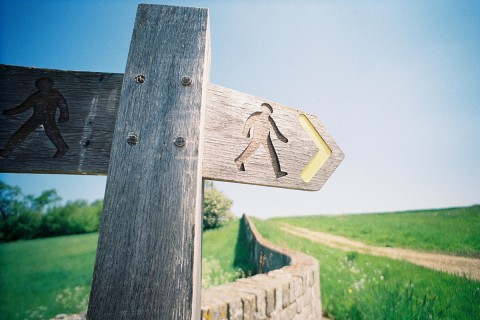Ways to walk
There’s something sacred in choosing to love the world at the speed of walking.

There are more than 200 references to walking in the Bible. Some have to do with physical mobility (“take up your bed and walk”). Many are metaphorical, like Micah’s famous dictum that ends with the phrase “walk humbly with your God.” There is also much talk of paths—ancient paths and slippery paths, paths of the wicked and of the upright, crooked paths and straight ones. The earliest Christians were called people who belonged to the Way, which suggests that discipleship from the beginning was a collective movement, with fellow travelers bound to each other in mutual care and affection. Certain strands of modern Protestantism would come to promote a more private spiritual project, posing questions like, “How is your walk with Jesus?”
As summer comes to a close, these bits of knowledge are on my mind. In recent months I found myself walking more than I ever have in my life. I walked for the benefits to my physical well-being. (I ran a good bit, too, but that is a different thing, with other associations to the Christian life.) I walked to relieve mental and emotional stress—to work some things out in my head and heart. And I walked to transport myself from hotel, to train, to hospital, and back again many times while my son was ill for several days in a faraway city.
I don’t think my experiences of walking were at all exceptional. From the ancient peripatetic philosophers to Bashō, Rousseau, Thoreau, and—in our own time—Rebecca Solnit, human beings have long reflected on the deeply human action of bipedal motion. But, as with most things, when it’s your own experience it feels singular and revelatory.




